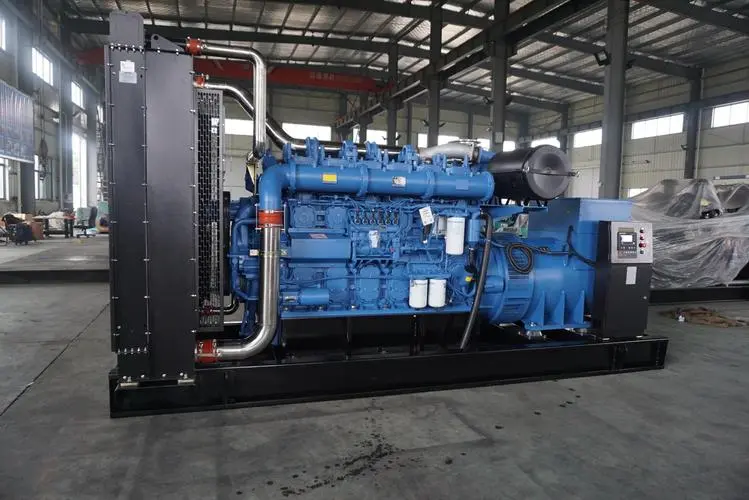Introduction
Diesel generators are a critical component of many industries, providing backup power during outages or serving as the primary power source in remote locations. Monitoring the performance of diesel generators in real-time can significantly enhance their efficiency, reliability, and overall performance. In this article, we will explore the importance of real-time monitoring for diesel generators, the key components of a monitoring system, the benefits it offers, and some best practices for implementation.
Importance of Real-Time Monitoring for Diesel Generators
Diesel generators play a vital role in ensuring continuous power supply in various applications, such as hospitals, data centers, telecommunications facilities, and remote construction sites. However, these generators can be prone to malfunctions or failures, which can result in costly downtime and disruptions to operations. Real-time monitoring allows operators to track the performance of diesel generators continuously and detect any issues before they escalate into serious problems.
By monitoring key parameters such as fuel levels, oil pressure, coolant temperature, load capacity, and battery status in real-time, operators can proactively address potential issues and take corrective actions promptly. This proactive approach helps to prevent unexpected breakdowns, minimize downtime, and extend the lifespan of the generator. Additionally, real-time monitoring enables operators to optimize the performance of diesel generators, leading to increased efficiency and cost savings.
Key Components of a Diesel Generator Monitoring System
A comprehensive diesel generator monitoring system typically consists of the following key components:
1. Sensors: Sensors are used to collect data on various parameters such as fuel levels, oil pressure, coolant temperature, exhaust temperature, and voltage output. These sensors are installed at strategic locations on the generator to capture real-time data accurately.
2. Data Acquisition System: The data acquired by the sensors is transmitted to a data acquisition system, which processes and stores the data for analysis. The data acquisition system may be integrated with the generator control panel or operate as a standalone unit.
3. Communication Network: The data collected by the monitoring system needs to be transmitted to a central monitoring station for analysis. This is typically done using a communication network such as Ethernet, Wi-Fi, or cellular connectivity.
4. Monitoring Software: Monitoring software is used to analyze the data collected by the monitoring system and provide real-time insights into the performance of the diesel generator. https://www.lkpowerplant.com/product/500kw-625kva-water-cooled-dual-frequency-electric-generator-set-genset-for-prime-backup-power/ may include features such as dashboards, alerts, and reports to help operators monitor the generator effectively.
Benefits of Real-Time Monitoring for Diesel Generators
Real-time monitoring of diesel generators offers several benefits to operators and organizations, including:
1. Early Detection of Issues: By monitoring key parameters in real-time, operators can detect potential issues such as low fuel levels, overheating, or abnormal vibrations before they lead to a breakdown. This early detection allows operators to take preventive actions and avoid costly downtime.
2. Improved Reliability: Real-time monitoring helps to ensure the reliability of diesel generators by identifying and addressing issues promptly. By maintaining optimal performance, operators can rely on the generator to provide backup power when needed.
3. Enhanced Efficiency: Monitoring the performance of diesel generators in real-time allows operators to optimize their operation and maximize fuel efficiency. By adjusting load capacity, fuel consumption, and maintenance schedules based on real-time data, operators can reduce operating costs and improve overall efficiency.
4. Remote Monitoring: Real-time monitoring systems can be accessed remotely, allowing operators to monitor the performance of diesel generators from anywhere at any time. This remote access enables quick decision-making and troubleshooting without the need for on-site presence.
5. Predictive Maintenance: Real-time monitoring data can be used to implement predictive maintenance strategies, where maintenance activities are scheduled based on the actual condition of the generator rather than a predefined schedule. This proactive approach helps to prevent unexpected failures and extend the lifespan of the generator.
Best Practices for Implementing Real-Time Monitoring of Diesel Generators
To ensure the successful implementation of real-time monitoring for diesel generators, operators should follow these best practices:
1. Define Key Performance Indicators (KPIs): Identify the key parameters that need to be monitored in real-time to ensure the reliable and efficient operation of the diesel generator. Establish clear KPIs that align with the goals of the monitoring system.
2. Select the Right Monitoring System: Choose a monitoring system that meets the specific requirements of your diesel generator, taking into account factors such as the size of the generator, the complexity of the system, and the availability of communication networks.
3. Ensure Proper Installation of Sensors: Install sensors at critical points on the generator to capture accurate data. Regularly calibrate and maintain the sensors to ensure reliable performance.
4. Implement Data Analysis Tools: Use advanced data analysis tools to interpret the data collected by the monitoring system and generate actionable insights. Implement features such as trend analysis, predictive maintenance algorithms, and anomaly detection to optimize the performance of the generator.

5. Establish Monitoring Protocols: Develop standard operating procedures for monitoring the diesel generator in real-time, including regular checks, response protocols for alarms and alerts, and escalation procedures for critical issues.
6. Train Operators: Provide training to operators on how to use the monitoring system effectively, interpret the data collected, and take appropriate actions in response to alerts or alarms. Ensure that operators are familiar with the monitoring software and can make informed decisions based on real-time data.
Conclusion
Real-time monitoring of diesel generators is essential for enhancing efficiency, reliability, and performance. By monitoring key parameters in real-time, operators can detect issues early, optimize the operation of the generator, and prevent unexpected failures. Implementing a comprehensive monitoring system with the right components and following best practices can help organizations maximize the benefits of real-time monitoring for diesel generators. By investing in real-time monitoring technology, operators can ensure the continuous and reliable operation of diesel generators in various applications.
